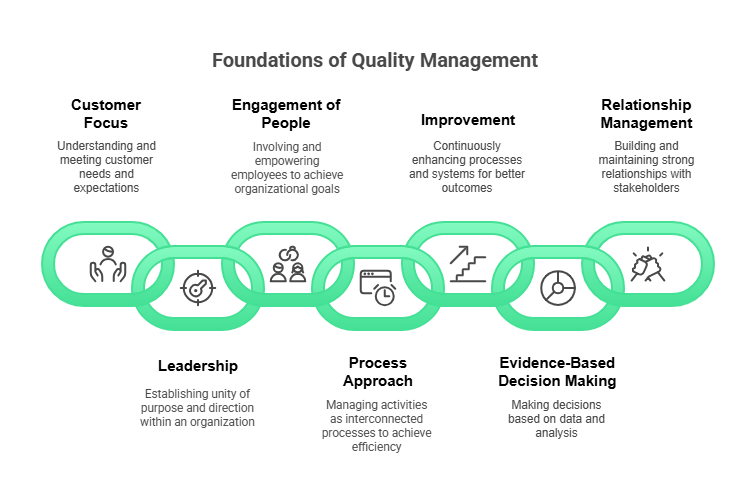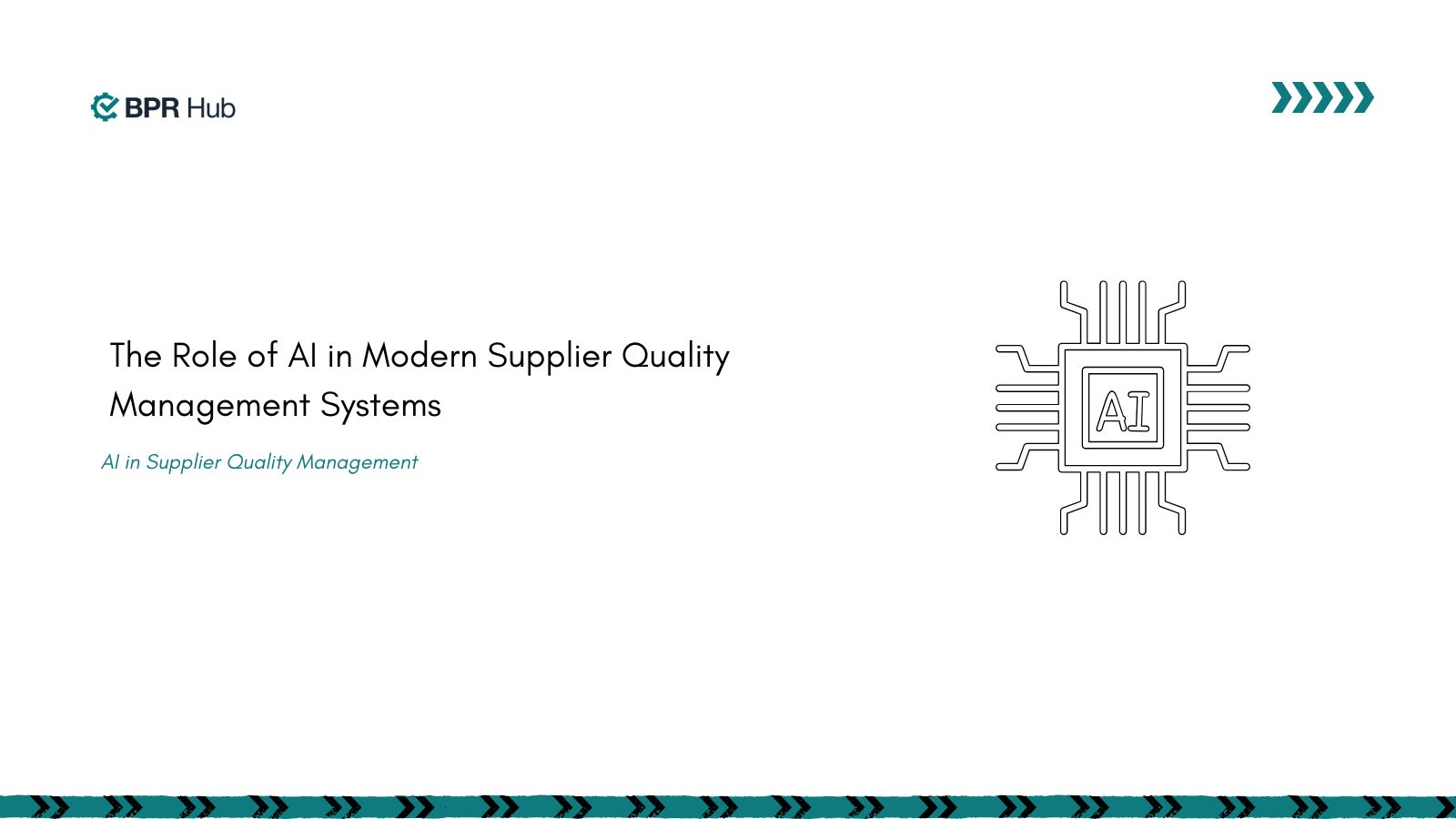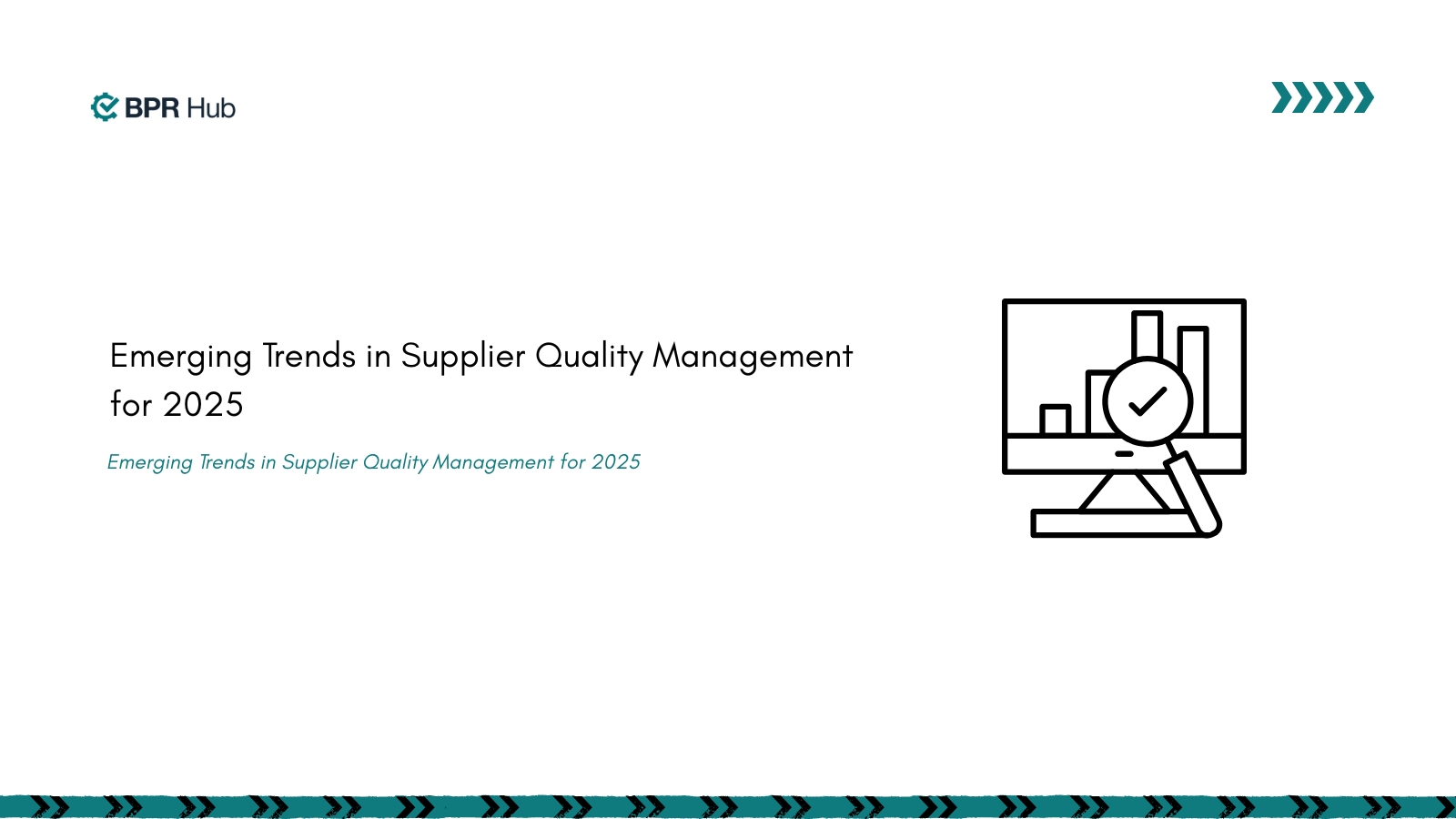In today's competitive business landscape, organizations across all industries and sizes strive to demonstrate their commitment to quality management excellence, thereby strengthening their operational capabilities. Within the realm of quality management standards, ISO 9001 and ISO 9002 certifications have historically served as pivotal benchmarks for ensuring that organizations consistently deliver superior products and services under the International Organization for Standardization (ISO) framework.
ISO 9001 and ISO 9002 are widely recognized certifications among the ISO 9000 series, yet only ISO 9001 is regarded as the most popular and relevant. While ISO 9001 was revised in 2015, the latest revision of ISO 9002 was made way back in 1994. This can spark many doubts, such as whether ISO 9002 certification remains relevant and the differences between ISO 9001 and ISO 9002.
In this blog, we will address all your queries while exploring the key differences between ISO 9001 and ISO 9002 certifications, their scope, applicability, and how they have evolved over time.
What is ISO?
ISO is the International Organization for Standardization, an independent non-governmental organization that develops and publishes standards for products, processes, services, and materials across every industry. ISO members are from the national standards bodies of 172 countries.
ISO has issued over 25,000 standards covering aspects like technology, manufacturing, and management. The evolving needs of the manufacturing industry, driven by increasing demands for product quality and customer satisfaction, are addressed by these ISO standards, which are monitored by 841 technical committees and subcommittees across the globe that create uniformity in manufacturing processes, terminology, and measurements, reducing errors and inconsistencies.
What is the ISO 9000 series?

The ISO 9000 family is a set of international standards focused on quality management systems (QMS). It provides guidance for organizations to meet adequate quality assurance, regulatory requirements, and customer expectations.
ISO 9000 was published in 1987, followed by several revisions in the subsequent years, namely in 2000, 2008, and the recent one in 2015. ISO 9000:2015 Quality management systems - Fundamentals and Vocabulary, which outlines key quality management principles, including:
- Customer focus
- Leadership
- Engagement of people
- Process approach
- Improvement
- Evidence-based decision making
- Relationship management.
ISO 9001 and ISO 9002 both belong to the ISO 9000 series. Let’s examine each in more detail and then differentiate them.

What is ISO 9001?
ISO 9001 is the international standard for quality management systems. It ensures that the organization’s products and services meet customer satisfaction and regulatory requirements, further fueling continuous improvement. It is the most widely recognized standard of the ISO 9000 series, which aims to minimize production costs without neglecting product quality.
As it is the basis of an organization's Quality Management System, the ISO 9001 certification emphasizes a process-oriented approach, focusing on continual improvement, leadership commitment, and customer satisfaction. Organizations must document their processes, conduct internal audits, and undergo regular management reviews to ensure compliance.
One of the most critical steps in acquiring ISO 9001 certification is conducting internal auditing. As the process can be hectic, the AStandards Hub by BPRHubudit Hub by BPRHub offers a comprehensive solution to streamline and enhance audit efficiency. Click here for a free consultation to help you achieve ISO 9001 certification with centralized audit management.
Ready to streamline your ISO 9001 certification journey? Book a consultation with BPR Hub today.
📍 Book a Demo
📧 hello@bprhub.com
What is ISO 9002 certification?
ISO 9002 is a quality management system in the ISO 9000 series that consists of specific guidelines for installation, production, and servicing. It was much more focused on quality assurance, without new design and specifications for the development of new products. ISO 9002 consisted of almost all ISO 9001 guidelines and provided guidance on how to apply the quality management system requirements of ISO 9001.
ISO 9002 was already outdated when ISO 9001:2000 was introduced, replacing ISO 9001, ISO 9002, and ISO 9003, which were issued in 1994. With the subsequent revision of ISO 9001 in 2015, ISO 9002 became obsolete.
ISO 9001 and ISO 9002 are both quality management standards that aim to improve organizational performance, but they serve different purposes. Let’s analyze their minute differences in detail.
What are the differences between ISO 9001 and ISO 9002 certification?
According to the 2023 ISO survey, the number of valid ISO 9001:2015 certificates is estimated at 8,37,052 issued across 1,249,317 sites worldwide. This significant number reflects the widespread adoption of the ISO 9001:2015 standard, highlighting its importance in establishing effective QMS within various organizations.
As the emphasis on the ISO 9000 series continues to grow, it becomes increasingly crucial for businesses and stakeholders to understand the differences among the individual standards within this series.
ISO 9001 focuses on the entire quality management system, including the production and design of products and services. ISO 9002 was explicitly intended for companies that only manage production, servicing, and installation but do not engage in product or service design. Although they came from the same series, they had many differences.
Let’s look through the table for a detailed differentiation analysis.
Many international and domestic standards, not just ISO 9001 certification, can strategically benefit your organization. You must be thinking about how difficult it is to manage and adhere to so many standards, and this is where Standards Hub by BPRHub comes in.
Standards Hub is a centralized, user-friendly platform that manages the complex compliance system while integrating various domestic and international standards to ensure consistency across all manufacturing operations. Contact BPR Hub to simplify your compliance process and obtain ISO 9001 certification.
Why did ISO 9001 replace ISO 9002?
With regular updates and revisions to meet evolving quality standards, ISO 9001 is still widely opted for by many organizations.
- With the introduction of the ISO 9001:2000 standard, which was the compilation of three versions of the standard ISO 9001, ISO 9002, and ISO 9003. Hence, ISO 9002 became less relevant by the year 2000
- With the 2015 revision of ISO 9001, which incorporates the popular process-based approach, ISO 9002 became obsolete. It was withdrawn and integrated into ISO 9001, making ISO 9001 the comprehensive standard for quality management systems.
- In ISO 9001:2015, organizations had the liberty to disregard the standards that did not apply to them, making it easier for them to implement ISO standards.
- Letting go of multiple versions of similar standards was beneficial to all sides, reducing much of the jargon and confusion.
What was the impact of the 2015 revision on ISO 9001
ISO 9001:2015 has become the most popular ISO certification. The 2015 revision paved the way for many impactful changes. Some of them are as follows.
- It simplified the documentation process, giving organizations more flexibility and allowing them to focus on understanding their internal and external context.
- It also emphasized a proactive approach that helps organizations to plan their processes and interactions.
- By incorporating risk-based thinking, organizations can put up preventive controls to minimize adverse effects.
- The introduction of the PDCA cycle enables an organization to ensure that its processes are adequately resourced and managed.
- The 2015 revision adopted the High-Level Structure, also called the Annex SL structure, making it easier to integrate ISO 9001 with other management standards such as ISO 27001, ISO 14001, or ISO 45001.
How BPR Hub helps to manage various standards
Whether your business is focused on software, manufacturing, managing sustainable events, or providing services, your organization is supposed to adhere to different domestic and international standards. It requires many of your resources and staff to manage these standards; even then, it can get hectic. This is where BPR Hub plays a crucial role.
BPR Hub is a cloud-based compliance management platform designed by industry experts to simplify the compliance process. It is a one-stop solution that automates your compliance process by streamlining multiple standards, managing documentation, and centralizing the auditing process. This will reduce the compliance burden and allow manufacturers to divert their resources and staff to focus more on core activities.
Tired of juggling multiple compliance standards? Centralize your quality management with BPR HUB.
📍 Book a Demo
📧 hello@bprhub.com
Key Takeaway
- ISO 9001 covers the full scope of quality management, including design, while ISO 9002 excludes design and is now obsolete.
- ISO 9001:2015 is the latest and most widely adopted QMS standard with a strong focus on continuous improvement and risk-based thinking.
- ISO 9002 was merged into ISO 9001 in the year 2000, simplifying the standard landscape for organizations.
- The 2015 revision of ISO 9001 introduced greater flexibility, improved process integration, and aligned with other standards using the Annex SL structure.
- Organizations benefit from ISO 9001 certification by demonstrating quality excellence, boosting customer satisfaction, and improving operational efficiency.
- BPR Hub simplifies compliance by centralizing standards management, documentation, and audits through its powerful cloud-based platform.
FAQ
Q. What is the difference between ISO 9001 and ISO 9002?
ISO 9001 covers the complete quality management system, including design, development, production, installation, and servicing, while ISO 9002 only covers production, installation, and servicing without design elements. ISO 9001 requires comprehensive audits and emphasizes customer focus, leadership, and risk-based thinking. ISO 9002 became obsolete in 2000 when it was integrated into ISO 9001:2000, making ISO 9001 the single comprehensive standard for quality management systems.
Q. What is the difference between ISO 9001 and 9002, and 9003?
ISO 9001 was the most comprehensive standard covering design, development, production, installation, and servicing. ISO 9002 covered production, installation, and servicing but excluded design and development. ISO 9003 was the most limited, covering only final inspection and testing. All three standards were merged into a single ISO 9001:2000 standard in 2000, allowing organizations to exclude non-applicable requirements. Today, only ISO 9001 remains active and relevant, with ISO 9002 and ISO 9003 being completely obsolete since the year 2000.
Q. What is the difference between TL 9000 and ISO 9001?
TL 9000 is a telecommunications industry-specific quality management standard based on ISO 9001 requirements but with additional telecommunications sector requirements. While ISO 9001 is a generic quality management standard applicable to any industry, TL 9000 includes specific metrics, measurements, and processes tailored for telecommunications equipment, software, and services. TL 9000 incorporates all ISO 9001 requirements plus industry-specific criteria for hardware reliability, software quality, and service performance metrics that are crucial for telecommunications providers and suppliers.
Q. When did ISO 9002 become obsolete?
ISO 9002 became obsolete in the year 2000 when the ISO 9001:2000 revision was published. The International Organization for Standardization consolidated three separate standards - ISO 9001, ISO 9002, and ISO 9003 - into a single, comprehensive ISO 9001:2000 standard. This integration eliminated the need for multiple similar standards and reduced confusion in the marketplace. Organizations previously certified to ISO 9002 were required to transition to ISO 9001 certification, making ISO 9002 completely obsolete and no longer available for new certifications since 2000.
Get insights that help you minimize risks and maximize profits.
Dive deeper into manufacturing compliance with our free resources.
We get it, compliance can get tough.
Here are some additional resources to help.
We get it, compliance can get tough. Here are some additional resources to help.
Get updates in your inbox

.svg)
%20(1).svg)


.jpg)


%20(1).svg)

.avif)

